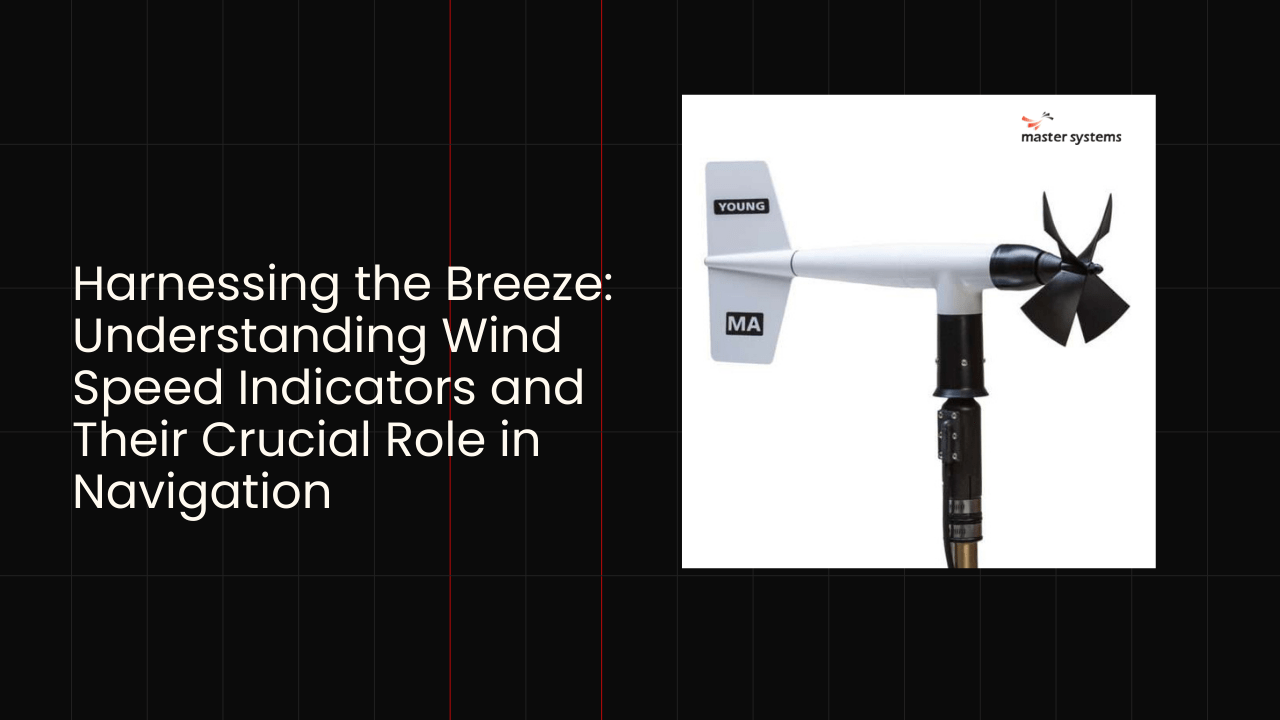In the vast expanse of the open sea, where endless horizons meet the sky, navigating a ship becomes a delicate dance between man and nature. One of the most critical elements influencing maritime navigation is the wind, and understanding its speed is paramount for ensuring safe and efficient journeys. This is where Wind Speed Indicators, often equipped with anemometers, play a pivotal role in the maritime world.
A Wind Speed Indicator, also known as an anemometer, is a device designed to measure the speed of the wind. These instruments come in various forms, from simple handheld devices to sophisticated digital displays used in advanced navigation systems.
Wind Speed Indicators and Navigation
The wind, a dynamic force of nature, can greatly impact a ship’s course and speed. Wind Speed Indicators provide crucial information to mariners, aiding them in making informed decisions for route planning, sail adjustments, and overall navigation strategies.
Workflow and the Use of Wind Indicators in Ships
1. Measuring Wind Speed:
Wind Speed Indicators typically employ anemometers, which can come in different designs, such as cup, vane, or sonic anemometers. These devices gauge the velocity of the wind and convert it into a readable format.
2. Integration with Navigation Systems:
Modern ships are equipped with advanced navigation systems that integrate Wind Speed Indicators into their displays. This integration allows for real-time monitoring of wind conditions, helping sailors adapt to changing circumstances swiftly.
3. Sail Adjustments:
Sailors use wind speed information to optimize their sails for maximum efficiency. Too much wind can lead to instability or even capsize, while too little can impede progress. Wind Speed Indicators assist in finding the sweet spot for sail adjustments, ensuring optimal performance.
4. Route Planning and Fuel Efficiency:
Knowing the prevailing wind conditions allows navigators to plan routes that take advantage of favorable winds, potentially reducing fuel consumption and enhancing overall efficiency. This is particularly crucial for long-haul voyages where fuel costs and environmental considerations are significant factors.
5. Emergency Situations:
Wind Speed Indicators also play a vital role in predicting and preparing for adverse weather conditions. In emergency situations, such as storms, accurate wind speed data allows crews to take proactive measures to ensure the safety of both the vessel and its occupants.
The Master System offers various models of wind speed indicators.
1. Clipper Wind System:
Master System offers the Clipper Wind System, part of the Clipper range, housed in a compact 110mm square case. Boasting a large and clear display with 60 segments for 360-degree direction indication, it allows users to view wind speed in knots, M.P.H., or Meters/second. The pointer style is customizable, offering single or multi-segments for clarity or a ‘windex’ style indicator. The masthead unit, featuring NMEA 0183 output sentence MWV, comes with 20 meters of cable. The complete Clipper Wind system includes a Display unit, masthead unit with cable, and mounting blocks.
2. Lillie Gillie 2050 MK 2:
The Walker 2050 Wind System employs a Combined Anemometer Cup & Vane Direction Sensor, the P296, ensuring high accuracy in a robust package. This sensor connects directly to the Walker DIN 144 wind speed & direction indicator (P1249), providing digital displays of relative wind speed & direction. Wind direction is also represented on a simulated analog display using 72 LEDs. For true wind systems, the sensor can be used with the Walker P1066 True Wind Interface Unit.
3. Simrad IS 42:
The Simrad IS 42 is a multi-purpose sailing instrument and autopilot display featuring a 4.1-inch color screen. Optically bonded for zero condensation, it utilizes transflective LCD technology. This versatile instrument provides crucial information for sailing and autopilot functions.
4. Young 05106 Wind Monitor-MA:
The YOUNG Model 05106 Wind Monitor-MA is designed for measuring horizontal wind speed and direction. Similar to Model 05103, it uses durable ceramic bearings and ruggedized vertical components for marine environments. The wind speed output is an AC sine wave, and the direction is measured through a precision potentiometer. Various cable lengths are available, sealed internally within the sensor, and it can be paired with displays from Young.
5. Young 86000-SDI Ultrasonic Anemometer:
A specialized version of Model 86000, the YOUNG Model 86000-SDI Ultrasonic Anemometer operates similarly but utilizes the SDI-12 (v1.3) serial communication protocol for minimized power consumption. Users can select display units from Young to complement this advanced ultrasonic anemometer.
In the intricate dance of ship and sea, understanding the wind is fundamental to safe and efficient navigation. Wind Speed Indicators, with their sophisticated technology and integration into modern navigation systems, empower sailors to harness the power of the wind effectively. As maritime technology continues to evolve, the role of Wind Speed Indicators will remain pivotal, guiding vessels through the vast and unpredictable oceans with precision and confidence. The ability to navigate successfully in varying wind conditions is not just a skill; it’s an art form that mariners master with the help of these indispensable instruments.
Reach Us
